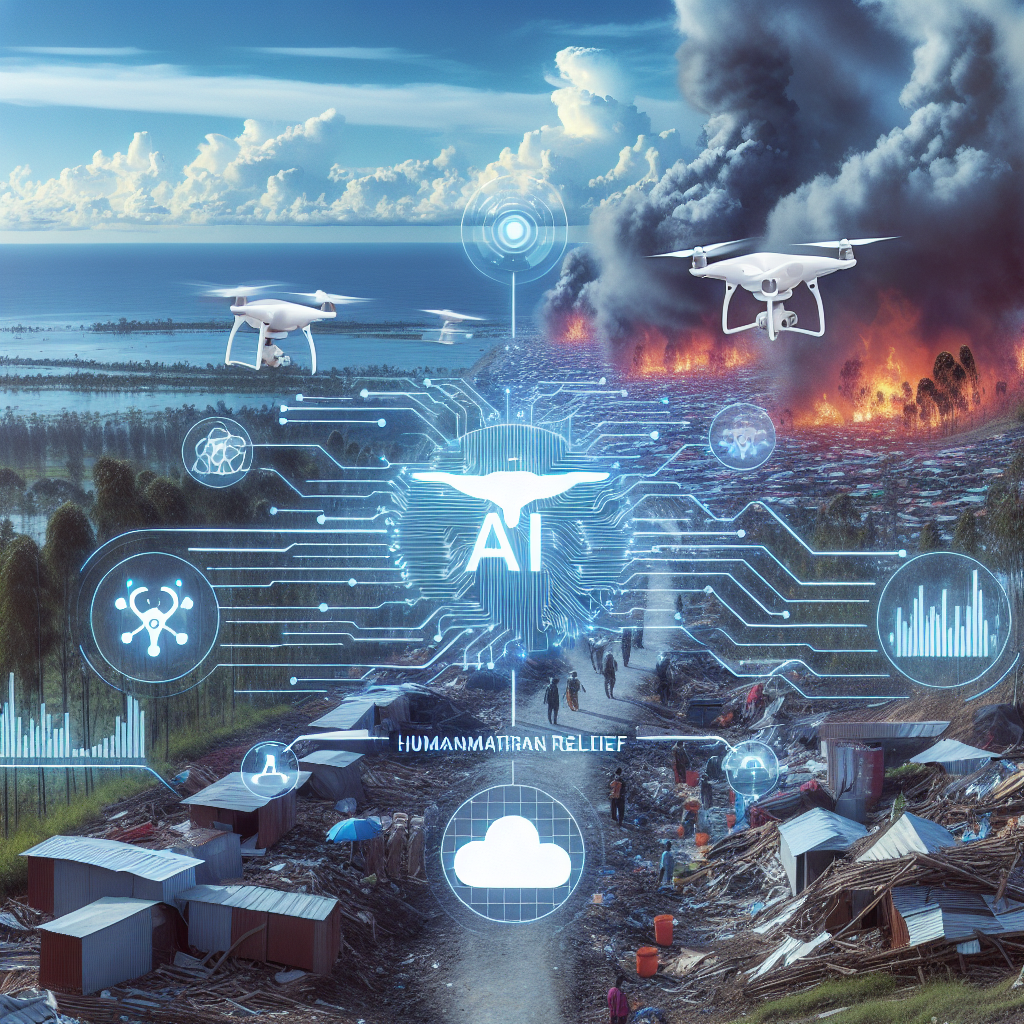Artificial intelligence (AI) automation has the potential to revolutionize humanitarian relief efforts by streamlining processes, improving efficiency, and ultimately saving more lives. In recent years, the use of AI in the humanitarian sector has been steadily increasing, with organizations leveraging this technology to address complex challenges and deliver aid more effectively to those in need. From disaster response to refugee assistance, AI automation is transforming the way humanitarian organizations operate and making a significant impact on the lives of vulnerable populations around the world.
One of the key benefits of AI automation in humanitarian relief is its ability to quickly analyze large amounts of data to provide real-time insights and inform decision-making. During a natural disaster or humanitarian crisis, time is of the essence, and AI can help organizations rapidly assess the situation, identify areas of need, and allocate resources accordingly. For example, AI-powered drones can be deployed to survey affected areas and assess damage, allowing relief workers to prioritize their response efforts and deliver aid to those who need it most.
AI automation can also help humanitarian organizations optimize their supply chain management processes, ensuring that essential goods and services reach beneficiaries in a timely manner. By using AI algorithms to forecast demand, track inventory levels, and optimize delivery routes, organizations can reduce waste, minimize costs, and improve the overall efficiency of their operations. This is particularly important in emergency situations where resources are limited and every minute counts.
Furthermore, AI automation can enhance the effectiveness of monitoring and evaluation efforts, allowing organizations to track the impact of their programs in real-time and make data-driven decisions to improve outcomes. By analyzing data from various sources, such as social media, satellite imagery, and remote sensors, organizations can gain valuable insights into the needs of affected populations and adjust their response strategies accordingly. This level of precision and responsiveness is critical in ensuring that aid reaches those who need it most and that resources are used effectively.
In addition to improving operational efficiency, AI automation can also enhance the safety and security of humanitarian workers in the field. By using AI-powered technologies, such as unmanned aerial vehicles (UAVs) and remote sensing devices, organizations can collect data and monitor situations in hazardous environments without putting their staff at risk. This allows organizations to gather critical information, assess risks, and plan their response strategies more effectively, ultimately saving lives and reducing the potential for harm to humanitarian workers.
Despite the many benefits of AI automation in humanitarian relief, there are also challenges and considerations that organizations must take into account. One of the main concerns is the ethical implications of using AI in humanitarian contexts, such as data privacy, bias, and accountability. Organizations must ensure that they are using AI technologies responsibly and ethically, taking into account the potential impact on vulnerable populations and adhering to strict guidelines and regulations.
Another challenge is the need for capacity building and training to ensure that humanitarian workers have the skills and knowledge to effectively use AI technologies in their work. This requires investment in education and training programs, as well as collaboration with technology experts and partners to develop and implement AI solutions that are tailored to the specific needs of humanitarian organizations.
Despite these challenges, the benefits of AI automation in humanitarian relief are clear. By leveraging the power of AI to analyze data, optimize processes, and improve decision-making, organizations can deliver aid more effectively, save more lives, and make a lasting impact on the lives of those in need. As AI technologies continue to evolve and become more sophisticated, the potential for innovation and transformation in the humanitarian sector is limitless, paving the way for a more efficient, responsive, and sustainable approach to humanitarian relief.
FAQs:
Q: How is AI automation different from traditional humanitarian relief efforts?
A: AI automation uses advanced technologies, such as machine learning and data analytics, to streamline processes, improve efficiency, and enhance decision-making in humanitarian relief efforts. This allows organizations to respond more quickly to emergencies, allocate resources more effectively, and deliver aid to those in need with greater precision and accuracy.
Q: What are some examples of AI automation in humanitarian relief?
A: Some examples of AI automation in humanitarian relief include using drones to survey disaster-affected areas, using predictive analytics to forecast demand for essential goods, and using remote sensing devices to monitor environmental conditions and assess risks. These technologies help organizations to gather data, analyze information, and make informed decisions to improve the effectiveness of their relief efforts.
Q: What are the ethical considerations of using AI in humanitarian relief?
A: There are several ethical considerations to take into account when using AI in humanitarian relief, such as data privacy, bias, and accountability. Organizations must ensure that they are using AI technologies responsibly and ethically, taking into account the potential impact on vulnerable populations and adhering to strict guidelines and regulations to protect the rights and dignity of those they seek to serve.
Q: How can organizations build capacity and train staff to use AI technologies in humanitarian relief?
A: Organizations can build capacity and train staff to use AI technologies in humanitarian relief by investing in education and training programs, collaborating with technology experts and partners, and providing hands-on experience and support to help staff develop the skills and knowledge they need to effectively use AI technologies in their work. This requires a commitment to ongoing learning and innovation to ensure that organizations are equipped to leverage the power of AI in their relief efforts.

